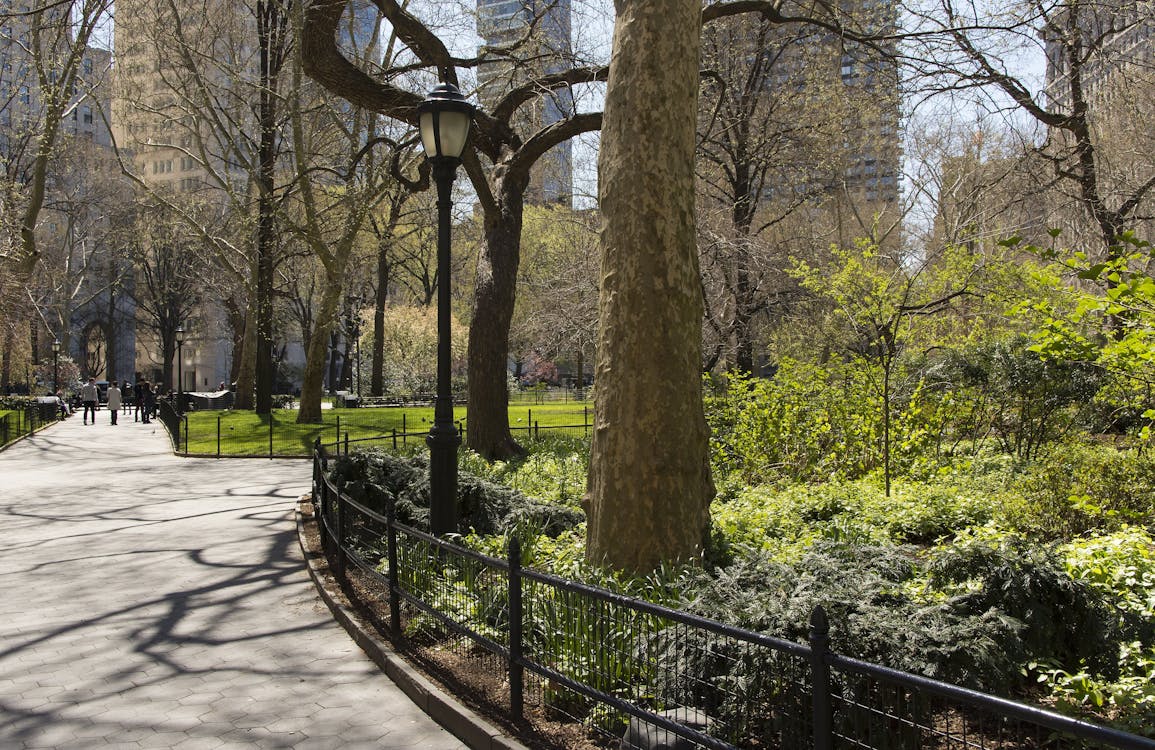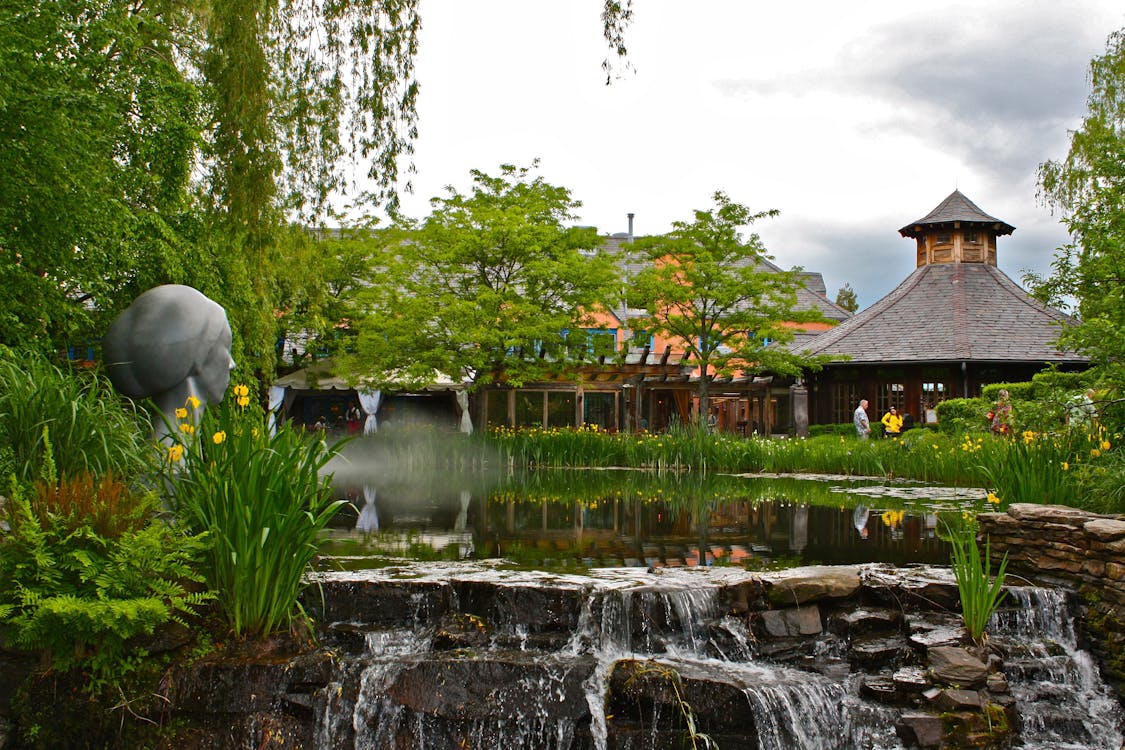We here in Stouffville are all about being environmentally friendly! So why should that end with our landscaping?
Sustainable landscaping has gained significant traction as an eco-friendly approach to creating and maintaining outdoor spaces. Using sustainable materials in landscaping not only benefits the environment but also enhances the aesthetic and functional aspects of landscapes. This comprehensive guide explores the reasons to use sustainable materials for landscaping, the types of sustainable materials available, and practical tips for integrating them into one’s landscaping projects. And remember – the professionals are here to help!
1. Understanding Sustainable Landscaping
Sustainable landscaping involves designing, constructing, and maintaining gardens and landscapes to reduce environmental impact, conserve resources, and promote biodiversity. It emphasizes the use of eco-friendly materials, efficient water management, and the preservation of local ecosystems.
2. Benefits of Using Sustainable Materials in Landscaping
a. Environmental Benefits
i. Conservation of Natural Resources
Using sustainable materials helps conserve natural resources. For example, recycled or reclaimed materials reduce the demand for new raw materials, thus preserving forests, minerals, and other natural resources. Sustainable landscaping practices also promote soil conservation and prevent erosion.
ii. Reduced Carbon Footprint
Sustainable materials often require less energy to produce and transport compared to conventional materials. This results in lower greenhouse gas emissions. For instance, locally sourced materials reduce the carbon footprint associated with transportation.
iii. Enhanced Biodiversity
Sustainable landscaping practices support biodiversity by creating habitats for native plants and wildlife. Using native plants and organic mulches fosters a healthy ecosystem, which benefits pollinators like bees and butterflies, and promotes overall ecological balance.
b. Economic Benefits
i. Long-term Cost Savings
While the initial cost of sustainable materials might be higher, they often prove more cost-effective in the long run. Durable materials reduce maintenance and replacement costs. For example, permeable pavers reduce water runoff and lower irrigation needs, resulting in savings on water bills.
ii. Increased Property Value
Sustainable landscapes can increase property value by creating aesthetically pleasing and environmentally friendly spaces. Homes with sustainable landscapes often attract eco-conscious buyers willing to pay a premium for environmentally responsible properties.

c. Health and Well-being Benefits
i. Improved Air and Water Quality
Sustainable landscaping practices improve air and water quality. Plants filter pollutants from the air, and sustainable irrigation practices reduce runoff, which prevents water pollution. Organic mulches and fertilizers avoid the introduction of harmful chemicals into the environment.
ii. Enhanced Mental and Physical Health
Exposure to green spaces has been linked to numerous health benefits, including reduced stress, improved mood, and enhanced physical well-being. Sustainable landscapes provide safe, toxin-free environments that encourage outdoor activities and promote mental health.
3. Types of Sustainable Materials for Landscaping
a. Recycled and Reclaimed Materials
Using recycled and reclaimed materials is a cornerstone of sustainable landscaping. These materials reduce waste and the demand for new resources.
i. Recycled Plastic and Rubber
Recycled plastic and rubber can be used for various landscaping applications, such as decking, pavers, and mulch. These materials are durable, low-maintenance, and divert waste from landfills.
ii. Reclaimed Wood
Reclaimed wood from old buildings, barns, and pallets can be used for fences, decking, and garden beds. It adds rustic charm and character to landscapes while reducing the need for new lumber.
iii. Crushed Concrete and Brick
Crushed concrete and brick can be used as an eco-friendly alternative to gravel for paths and driveways. They provide excellent drainage and a unique aesthetic while recycling demolition waste.

b. Natural and Renewable Materials
Natural and renewable materials are abundant and have a minimal environmental impact.
i. Bamboo
Bamboo is a fast-growing, renewable resource that can be used for fencing, decking, and garden structures. It is strong, lightweight, and has a smaller carbon footprint compared to traditional wood.
ii. Cork
Cork, harvested from the bark of cork oak trees, is a renewable resource that can be used for mulch and garden flooring. It is biodegradable, water-resistant, and provides insulation.
iii. Natural Stone
Natural stone, such as granite, limestone, and slate, is durable and requires minimal processing. It can be used for patios, pathways, and retaining walls, adding a timeless and elegant look to landscapes.
c. Organic and Eco-friendly Products
Organic and eco-friendly products promote soil health and reduce environmental impact.
i. Organic Mulch
Organic mulch, such as wood chips, straw, and leaves, enriches the soil as it decomposes, providing essential nutrients to plants. It also helps retain soil moisture and suppress weeds.
ii. Natural Fertilizers
Natural fertilizers, such as compost, manure, and bone meal, improve soil fertility without the harmful chemicals found in synthetic fertilizers. They promote healthy plant growth and microbial activity in the soil.
iii. Biodegradable Plant Pots
Biodegradable plant pots made from materials like coconut coir, peat, and rice hulls can be planted directly into the soil. They decompose naturally, reducing plastic waste and transplant shock for plants.
d. Water-efficient Materials
Water-efficient materials and practices are crucial for sustainable landscaping, especially in arid regions.
i. Permeable Pavers
Permeable pavers allow water to infiltrate the ground, reducing runoff and promoting groundwater recharge. They are ideal for driveways, walkways, and patios.
ii. Rain Barrels and Cisterns
Rain barrels and cisterns collect and store rainwater for irrigation, reducing the need for potable water. They are easy to install and help conserve water resources.
iii. Drip Irrigation Systems
Drip irrigation systems deliver water directly to the roots of plants, minimizing evaporation and runoff. They are highly efficient and reduce water usage significantly compared to traditional sprinklers.

4. Integrating Sustainable Materials into one’s Landscaping Projects
a. Planning and Design
A well-thought-out plan is essential for incorporating sustainable materials into one’s landscape.
i. Assess one’s Site
Conduct a thorough site analysis to understand one’s soil type, climate, sunlight, and water availability. This information will guide one’s material selection and design.
ii. Set Clear Goals
Define one’s goals for sustainability, such as reducing water usage, promoting biodiversity, or minimizing waste. These goals will influence one’s choice of materials and landscaping practices.
iii. Create a Sustainable Design
Design one’s landscape to incorporate sustainable features, such as rain gardens, native plantings, and efficient irrigation systems. Use natural contours and slopes to manage water runoff and erosion.
b. Selecting Materials
Choose materials that align with one’s sustainability goals and site conditions.
i. Prioritize Local Materials
Using locally sourced materials reduces transportation emissions and supports local economies. Local plants are also better adapted to the climate and require less maintenance.
ii. Consider Life Cycle Impact
Evaluate the environmental impact of materials over their entire life cycle, from production to disposal. Choose materials with low environmental footprints and high durability.
iii. Use Certified Sustainable Products
Look for products with certifications, such as FSC-certified wood or recycled content labels. These certifications ensure the materials meet specific sustainability standards.
c. Implementing Sustainable Practices
Implement sustainable practices during the construction and maintenance of one’s landscape.
i. Minimize Waste
Plan one’s projects to minimize waste. Reuse or recycle materials whenever possible, and compost organic waste.
ii. Conserve Water
Install efficient irrigation systems, such as drip irrigation or soaker hoses, and use rain barrels to collect and store rainwater. Mulch garden beds to retain soil moisture and reduce evaporation.
iii. Promote Soil Health
Use organic mulches and natural fertilizers to improve soil health. Avoid synthetic chemicals that can harm beneficial soil organisms.
iv. Encourage Biodiversity
Plant a variety of native plants to create habitats for wildlife and promote biodiversity. Avoid invasive species that can disrupt local ecosystems.
And so, hopefully we have convinced everyone to use sustainable materials for landscaping. However, those who don’t want to have to worry about it, the professionals are here to help!
